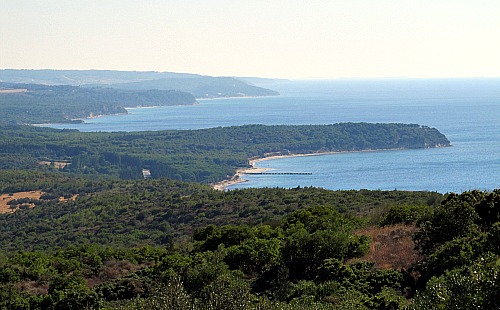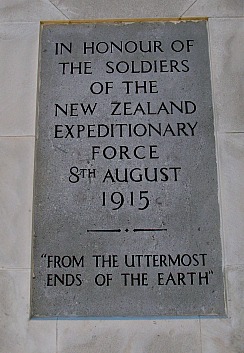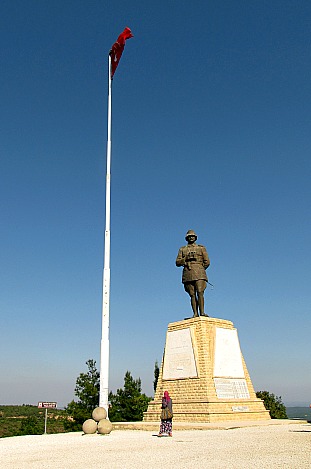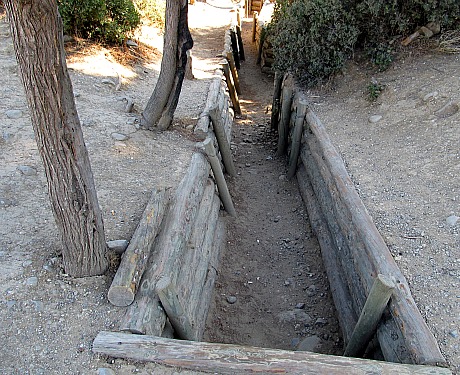As the miles clicked by, Alp fed us quirky Turkish tidbits of information, like the fact that the ship Queen Elizabeth was made in Turkey. He elaborated on the story our host of Melen Winery had told us about this area — how Greeks and Turks once lived here side by side, harmoniously. He stated these two countries are closely connected now, and that the Turks and the Greeks have put aside their age-old differences.
That may be true politically, but culturally, maybe not. Had I not been sitting so far back in the bus, I would have told him about my Greek friend and her adamant refusal to eat with us at a restaurant in Crete called the Well of the Turk. Don’t be fooled. There is still great resentment among the Greeks against Turkey as a country, if not against the Turks themselves.
The bus was headed to the Gallipoli peninsula, still in Thrace, which is the European part of Turkey. The Aegean Sea lies to the west and the Dardanelle straits to the east.
Climbing steeply away from the sea, we entered the Gallipoli National Historic Park. A breathtaking panoramic view of the Aegean stretched out towards the horizon.

Filled with cemeteries and monuments, this park memorializes the staggering loss of life during the Battle of Gallipoli that occurred here in 1915, during World War I.
The allies, consisting mostly of the British, French, Australians, and New Zealanders, tried to take this peninsula, a very important and strategic point in gaining control of Istanbul. They miscalculated their attack and after a nine-month siege and great loss of life, conceded victory to the Turks.
This was not only a turning point for Turkish independence, but the definitive battle that catapulted the formidable and heroic Mustafa Kemal (Ataturk) as a celebrated leader and, as you already know, his eventual place as the father of modern-day Turkey.
The huge monuments were impressive as was the gigantic statue of Ataturk.
Equally amazing were the trenches dug by the soldiers, still visible even after all these decades. It was eerie standing over these ditches, wondering what it must have been like to have been hunkered down in them for weeks at a time, in the dust and mud.
Walking along the rows and rows of grave markers, reading the inscriptions etched into them by far-away loved ones, made me sad. So many dead. So many young.
Mostly I found the whole park depressing despite its historic importance and incredible views. I was glad when we left.











